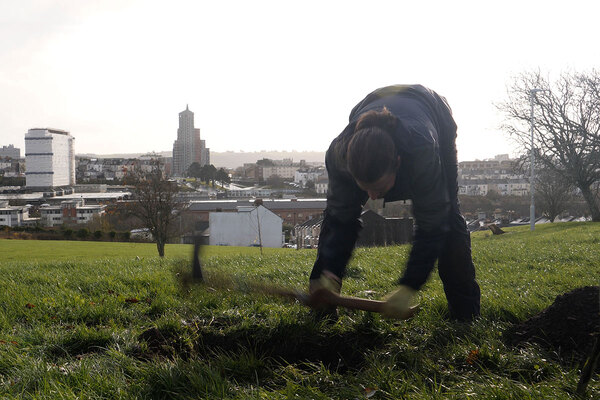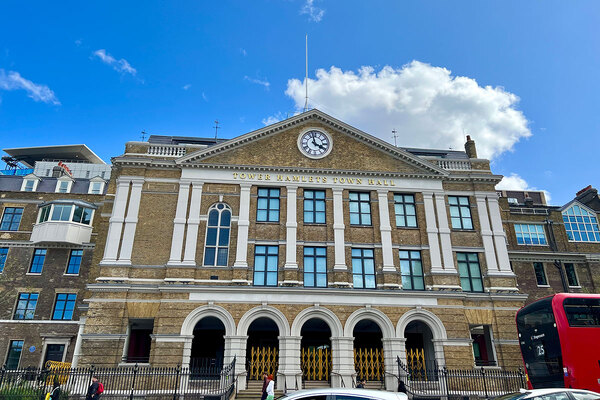Spending watchdog warns long-term success of ‘complex’ biodiversity laws are at risk
The National Audit Office (NAO) has warned that the government’s “novel and complex” biodiversity net gain policy was launched without having all the elements in place to ensure its long-term success.

The spending watchdog published a report on Friday 17 May examining the scheme, launched by the Department for Environment, Food and Rural Affairs (Defra) in February, to ensure house builders protect or improve biodiversity on land they are developing.
Defra needs to manage “a range of risks”, the NAO said, including whether a new biodiversity market emerges and whether enforcement by local authorities will be effective.
The government is still developing a way to spend money it receives from developers on biodiversity and also how to judge whether its policy is working, the report added.
Biodiversity net gain requires developments in England to improve habitats by a net 10%, ideally on site. When these gains are not enough, offsite gains can be created by the developer elsewhere or bought through a new private market for biodiversity credits.
The policy is being implemented in three stages, with developments of 10 or more homes in scope from February 2024, small sites from April 2024, and nationally significant developments from November 2025.
The government provided either £26,807 or £43,467 to each local authority, based on estimated application demand, to help them prepare in each of the two years before launch.
Councils could choose to spend the money on recruiting and training ecologists, procuring software and processing legal work. However, Defra acknowledged “mixed readiness” among local authorities at launch.
Defra did not give local authorities additional money specifically to monitor or enforce on-site gains, the NAO pointed out. However, the government hopes that councils can generate income from biodiversity net gain legal agreements, which can fund monitoring and enforcement work.
Officials are still developing governance arrangements for the policy but they do not intend to provide central monitoring of how well on and offsite biodiversity gains are being enforced by councils.
Defra and Natural England, who the government intends to make responsible for parts of the policy, “lack all the relevant information they need” to effectively evaluate the regime and determine whether it is a success, the report said. For instance, they do not have a comprehensive source of information of habitat enhancement taking place on site.
Simon Dilly, biodiversity net gain manager at Natural England, said: “Ensuring that new developments create habitats for wildlife and improve access to green space is an important step to accelerate nature recovery and foster healthy places for people to live and work.
“At Natural England, we are continuing to support Defra by working closely with developers, land managers and local authorities to roll out biodiversity net gain. This includes minimising barriers to entry in the market for biodiversity units and driving forward monitoring and evaluation to accurately understand the impact of biodiversity net gain on nature recovery and our communities.”
Defra is exploring what information might be available from local authority reporting against the statutory biodiversity duty, although this will only be available at five-yearly intervals.
Defra is “relying on a private sector market for biodiversity units emerging”, but does not know how rapidly it can scale up or satisfy demand. Where private markets fail to provide enough off-site credits, Defra will step in as a provider of last resort, with the money raised ringfenced for government mandated improvements to UK biodiversity.
The NAO recommended that government establishes a mechanism for spending income from the sales of statutory biodiversity credits.
It also said that local authorities should have “sufficient and timely funding certainty” to allow for longer-term planning regarding their role in agreeing and enforcing the scheme.
Gareth Davies, head of the NAO, highlighted “uncertainty about whether the fledgling market for biodiversity units scales up to satisfy developers’ demand [and] risks to enforcement” as risks to the scheme.
He added: “Defra must address these issues, including by plugging gaps in its information so that it can effectively evaluate the scheme’s success.”
A Defra spokesperson said: “Biodiversity net gain will ensure that new developments work for both wildlife and people. A mandatory 10% gain is estimated to create or secure areas of habitat the size of Bromley borough every year; it will drive further action to reverse the decline in nature and help meet our target for everyone to live within a 15-minute walk of a green space or water.
“We have carefully considered the recommendations of the report and they will inform our approach as we continue to work with developers, land managers and local authorities to ensure the smooth implementation of biodiversity net gain which strikes the right balance and delivers positive outcomes for nature.”
In another report from earlier this year, the spending watchdog also revealed how only 673 heat pumps were fitted out of nearly 23,000 energy efficiency measures installed using the government’s Social Housing Decarbonisation Fund over 20 months.
Sign up for our development and finance newsletter
Already have an account? Click here to manage your newsletters











